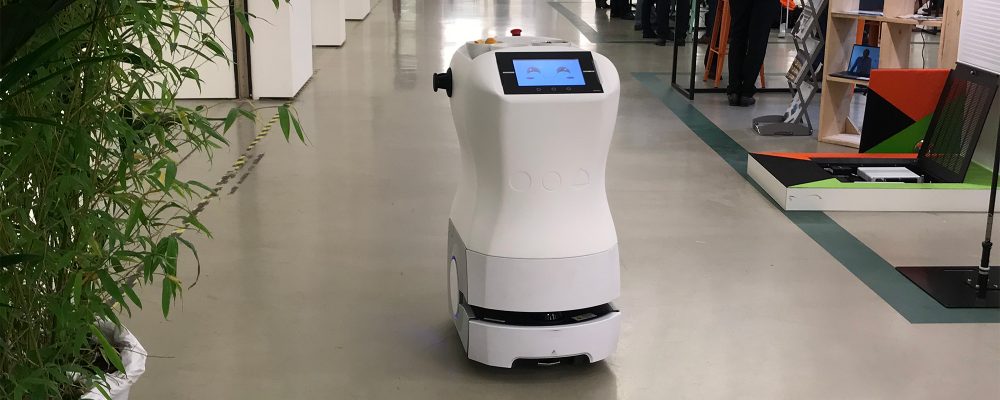
Collaborative robotics
- Expertise
- Temps de lecture : 6 min
What is collaborative robotics?
In a context of Factory of the Future, Smart Hospital, Smart City, robots should no longer replace humans but help them in their missions, thus allowing humans to avoid painful, repetitive or low-value tasks. added. The data processed by these robots allows them to react independently to a specific situation. Robotics thus becomes collaborative.
A collaborative robot is a robot designed to work in a common area with operators. It integrates safety functions (intrinsic safety, sensors, cameras, etc.) to facilitate human-robot interaction.
Two main families of collaborative robots emanate:
- Autonomous mobile robots: the robot moves and evolves autonomously in complex environments, in the presence of employees, handling equipment and/or the general public.
- Collaborative robotic arms: the robot will come to assist an operator in his low value-added tasks.
Collaborative robotics assists (and not replaces) employees:
The collaborative aspect of robotics is a factor in the acceptance of robots, which are too often seen as competitors on the labor market. However, the role of a collaborative robot is not to replace humans. It is, on the contrary, an “associate” working in concert with him. Mobile cobots will perform repetitive and dangerous tasks for operators. The latter will therefore allow operators to move towards more qualified positions.
In addition to its positive impact on working conditions, cobotics has a positive impact on employment by reducing the relocation of arduous activities, with low added value (which will now be carried out on national soil by robots) and could even eventually lead to the relocation of certain activities to France.
The advantages of collaborative robotics in the industrial sector:
On a human level, collaborative robotics improves the working conditions of employees: reduction of Musculoskeletal Disorders, reduction of arduousness, increase of the interest attributed to the work by the operator, etc. Indeed, by performing repetitive tasks with low added value, robots will allow employees to focus on more rewarding tasks.
From an economic point of view, collaborative robotics is a significant factor in increasing the productivity and therefore the competitiveness of production sites. Industries are more reactive to meet ever-increasing customer demands in terms of personalization. Moreover, as customers are increasingly demanding in terms of quality and deadlines, the gain in reproducibility and quality provided by collaborative robotics is invaluable in highly competitive sectors. Finally, highlighting these technological advances through external communication campaigns can also contribute to giving a successful and innovative corporate image.
At the technological level, collaborative robotics allows manufacturers to optimize the control of their processes. Thanks to these new technologies, the reproducibility of the tasks necessary for the production of a part is improved and traceability is facilitated. Tool and part transport flows are also reduced and operators can concentrate on tasks with higher added value.
Collaborative and security, attention to use…
Just because a robot is marketed as collaborative does not mean that it is, by definition, a safe robot. Indeed, as with any other tool, safety depends on the task. A collaborative robot brandishing a tool or a sharp part will be dangerous for workers, regardless of its slowness and the sensors it is equipped with. Safety assessments are required for collaborative robot applications as for any other industrial machine.
Meanwhile collaborative mobile robots are safe and secure…
In order to guarantee a maximum level of safety to our customers, Meanwhile certifies CE in their entirety all the products offered. Beyond the legal CE marking of the Cobot Mobile, Meanwhile undertakes to conduct a complete risk analysis of the solution provided, taking into account the environment in which the Cobot Mobiles operate. Meanwhile provides this risk analysis as a deliverable of the application, thus ensuring complete transparency on safety and environmental aspects.